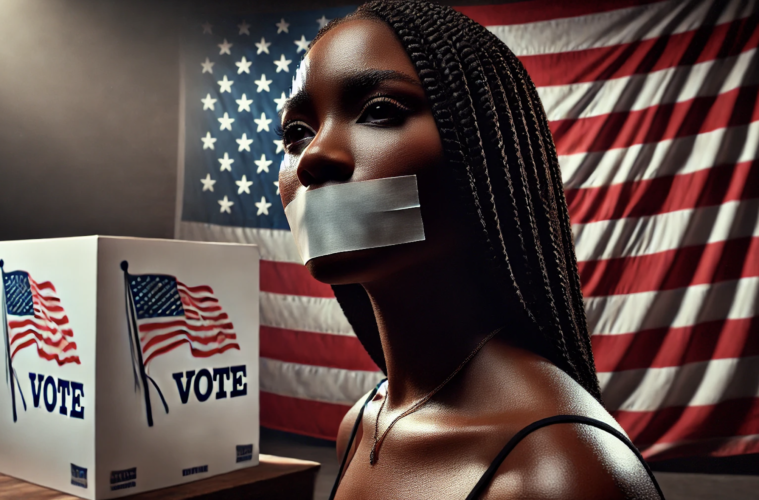By: Natalie Greene, student journalist
In 2025, it’s wild to think we’re still fighting to be heard. Still fighting to be seen. Still fighting for our votes to matter.
But that’s exactly where we are — especially in the South.
On March 24, the U.S. Supreme Court will hear a pair of consolidated redistricting cases — Louisiana v. Callais and Robinson v. Callais — that could redefine how race can be considered in drawing congressional districts, and potentially shake the foundation of the Voting Rights Act of 1965.
The cases began after a federal court ruled that Louisiana’s 2022 congressional map likely violated Section 2 of the Voting Rights Act, which prohibits voting practices that discriminate based on race. In response, Louisiana lawmakers drew a new map in 2024 — one that added a second majority-Black district. But now, a group of white voters is challenging that fix, claiming the new map is itself a racial gerrymander that violates the Equal Protection Clause of the Fourteenth Amendment.
Ahead of the hearing, Ethnic Media Services hosted a powerful briefing on March 14 titled “Voting Rights Under Attack in the South.” The takeaway was clear: This fight isn’t just about maps. It’s about power, representation, and the right to be seen — especially for communities long pushed to the margins.
“If I could put it very simply…”
“If I could put it very simply, voter suppression in Louisiana is like putting a boot on the neck of Black voters,” said Alanah Odoms, Executive Director of the ACLU of Louisiana. “Voting rights activists and attorneys like the ones that you see featured on our panel today are simply asking for that boot to be removed — not temporarily, but permanently in accordance with the Constitution and Section 2 of the Voting Rights Act.”
Odoms, a longtime civil rights leader, had just returned from Selma, Alabama, where she joined thousands marching across the Edmund Pettus Bridge to mark the 60th anniversary of Bloody Sunday.
“It was impossible not to feel the energy of those who came before us… who put their bodies on the line for something bigger than themselves,” she said.
So, what’s this case really about?
The case centers on whether Louisiana’s new congressional map — which includes a second majority-Black district drawn after the courts ruled the previous map violated the Voting Rights Act — can withstand a constitutional challenge.
After the legislature complied with court orders and redrew the map in 2024, a group of white voters filed suit, arguing the map constitutes a racial gerrymander that violates the Equal Protection Clause of the Fourteenth Amendment.
“This isn’t a racial gerrymander because race did not predominate,” said Victoria Wenger, Counsel at the NAACP Legal Defense and Educational Fund. “But even if race was predominant, the Supreme Court has… allowed legislatures to prioritize race if they have good reason to believe they have to — to comply with the Voting Rights Act.”
In short: race was considered because the law required it to be. Ignoring that would mean repeating history — where Black voters were packed, cracked, or completely erased from fair representation.
“We saw turnout increase”
Representation matters — and when people believe their voices actually count, they show up.
“We saw a two-point increase in voter turnout among Black voters,” said Ashley Shelton, Executive Director of the Power Coalition for Equity and Justice. “And then almost a five-point increase in Alabama… It is proof that when given the choice to actually have more representation and they had the power to do it — they did so.”
Shelton described unprecedented participation across Louisiana, even during brutal weather conditions. “We even had folks come out in the ice and the snow last year,” she said. “That’s how important this is.”
From student government presidents to elders, she said, “the citizens of Louisiana were really clear from the very beginning that they wanted fair maps and they wanted the ability to elect candidates of choice.”
This fight is about you, too.
You don’t have to live in Louisiana to feel the ripple effects of this case.
“The Voting Rights Act is an act that pertains to every state in the nation,” Odoms said. If the Court rules against the new map, it could set a precedent that makes it harder — or even legally risky — to consider race in ensuring fair representation across the country.
“States around the nation would start being quite nefarious in the way that they are doing their redistricting processes,” she warned.
Davante Lewis, Louisiana’s Public Service Commissioner, drove it home: “We are realizing that democracy is at threat… If you can control the game, you can control the outcome.”
What happens next?
The Supreme Court’s decision in Louisiana v. Callais and Robinson v. Callais will not only decide whether Louisiana keeps its new, more representative map — it could also reshape how states across the country address race, fairness, and democracy itself.
But no matter the outcome, advocates say the work won’t stop.
“Justice is not automatic. It is something that we must fight for generation after generation,” said Odoms. “We cannot simply hope for a better future. We have to build it with our own hands.”
Because this isn’t just about lines on a map. It’s about who gets to matter — and who gets erased.

